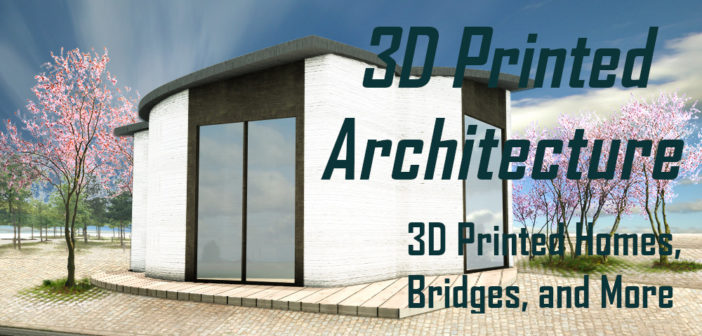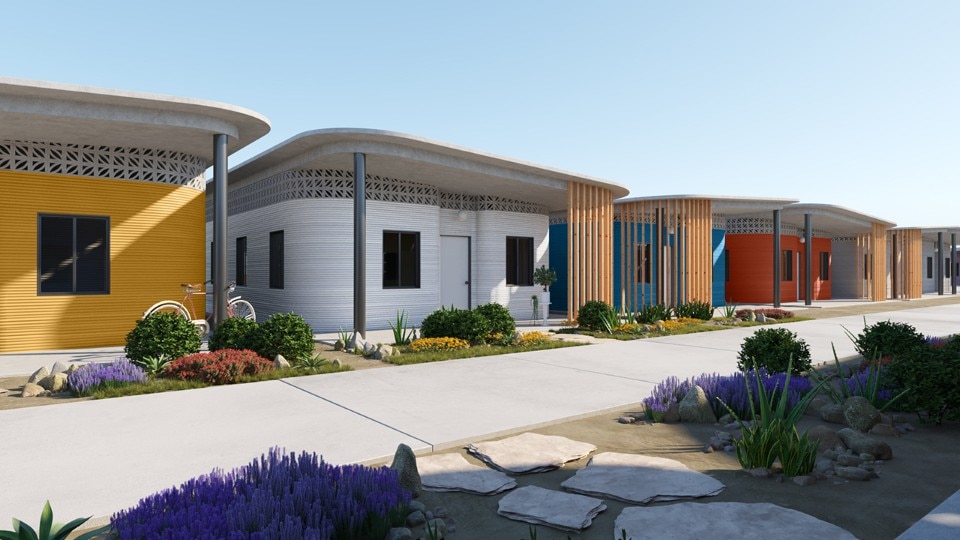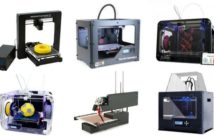By now, you’ve probably at least heard about 3D printed architecture. These buildings are erected in hours instead of weeks, all with minimal waste and at a low cost. Sounds too good to be true, but this technology is real and stands to make a huge impact in big cities and small communities alike. This article looks at the pioneers of 3D printed architecture, as well as the benefits and shortcommings of this technology.
How does 3D printing architecture work?
Fused-Deposit Modeling (FDM) printing is a type of 3D printing that works by adhering layers of material on top of each other, one at a time, until a full model is produced. This is the type of 3D printing used to make buildings.
The printers used in construction are more or less industrial-scale versions of home 3D printers. Instead of plastic filament, however, these printers extrude everything from cement to organic mixtures of earth and rice. Manufacturers are currently looking for ways to use sustainable, environmentally-friendly materials to make buildings. By using sustainable building materials with virtually no waste, 3D printing has the potential to make a positive impact on the environment.
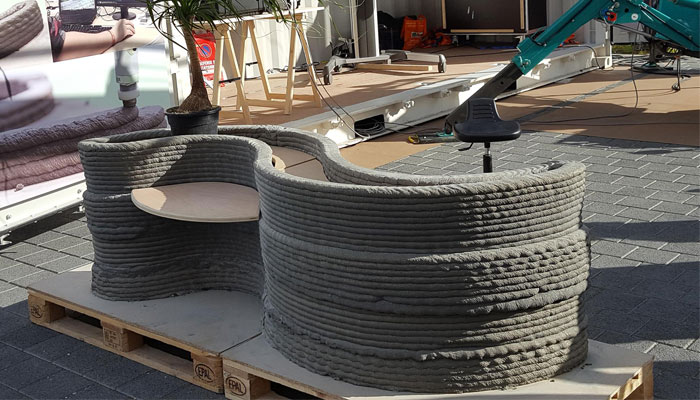
So, 3D printed buildings are made just like FDM models. Layer by layer, buildings are laid with extreme speed and accuracy either on-site or at a separate location.
What are the benefits of 3D printed architecture?
As mentioned, 3D printed buildings have a lot of potential to reduce the industry’s carbon footprint. 3D printed buildings are precisely built using exactly the right amount of materials with little waste.
Traditional construction is also dangerous work which results in thousands of deaths per year in the US alone. 3D printed architecture stands to save lives and make construction sites a safer place as the printer performs much of the heavy lifting.
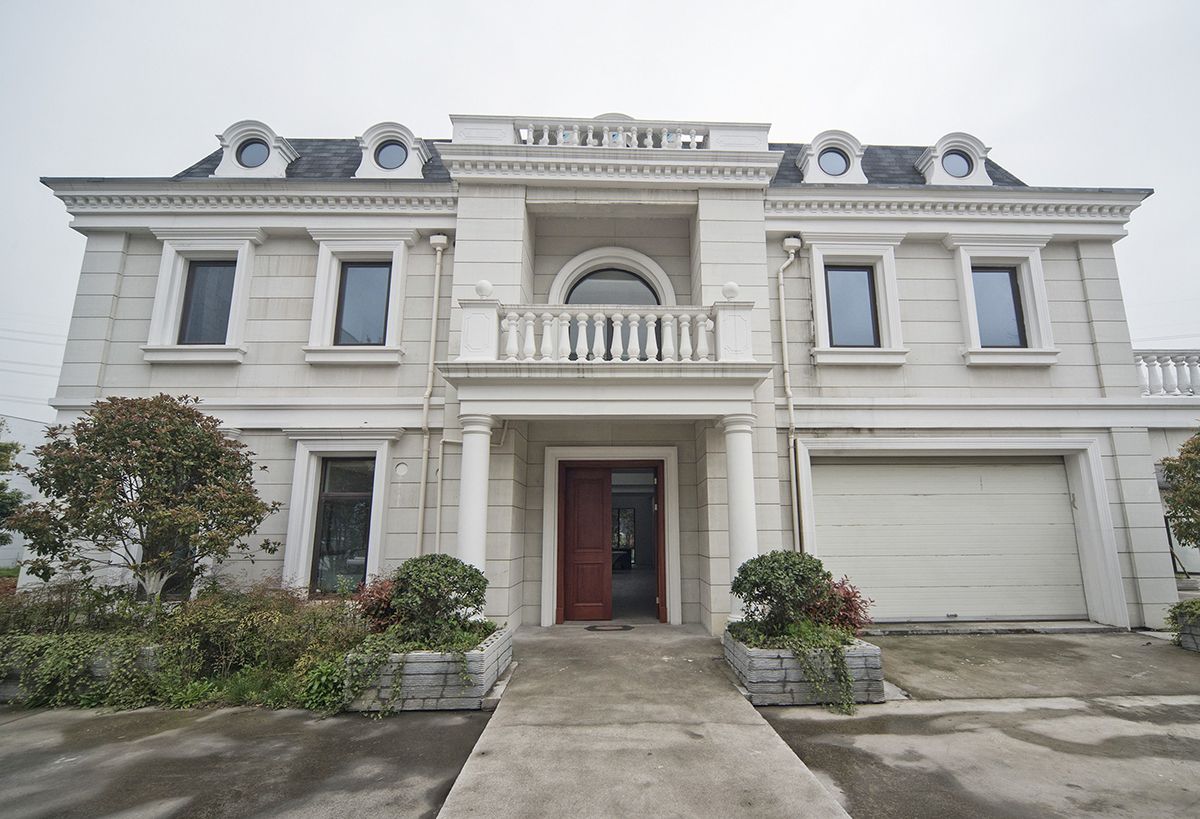
Additionally, shapes and patterns that were once expensive to produce, like curved walls, are easy to make with 3D printing. This technology gives architects the freedom to experiment with both the design and the durability of buildings with fewer restraints. Speaking of restraints, building via 3D printing is fast, though just how fast depends on the printer. Typically, a small functional home can be built in just a few days. That includes utility set up.

The technologies and methods used in 3D printed architecture are still in an experimental phase. As you’ll see, most companies come up with their own unique take on 3D printing buildings depending on what they build and where.
Notable 3D Printed Buildings
Small Community in Latin America
While there are many contributing factors to the global housing crisis, 3D printing stands to make an impact in places where the issues are cost or access to skilled labor and materials. Proponents of 3D printed construction hope that one day it will provide cheap, safe housing for impoverished people around the world who suffer from inadequate housing.
At the forefront of this mission, the companies Fuseproject, New Story, and ICON have teamed up to create the first 3D printed community housing project in Latin America. Each home features 592 sq.ft. of interior space with either two or three bedrooms. House lots will be 1290 sq.ft. in total, providing enough room for a covered outdoor patio area and even space for residents to keep chickens.
French Chateau for Four
Notable as the first lived-in 3D printed house, this home in France was built in 2018 and required just 54 hours of printing. As expected, windows, roofs, doors and facilities needed to be installed separately, but the walls of this home are all 3D printed. This home boasts a spacious 1022 sq.ft. interior complete with four bedrooms.
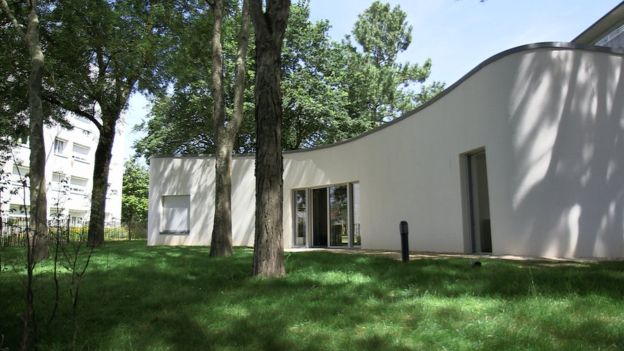
Interestingly, this 3D printed house is a government project in cooperation with the University of Nantes. Called the Ynova project, this collaboration is intended to explore housing solutions for the future. This house cost 20% less than it would have using traditional labor and costs are likely to drop even further.
Steel Printed Bridge in Amsterdam
3D printed architecture doesn’t end with buildings. There are currently multiple 3D printed bridges in use today, but the most impressive is the MX3D Bridge in Amsterdam. This incredible bridge was printed with steel, not concrete, using MX3D’s own house-designed printer. This printer takes advantage of multi-axis technology, giving it better mobility and versatility while printing.

Truly a feat of human engineering, design, and technological advancement, this bridge represents what’s possible with 3D printing. It’s currently in use and functioning as a footbridge for the people of Amsterdam.
Project Milestone
Until now, 3D printed buildings have mostly been for show, or produced as tests that prove the concept. Even Fuseproject’s 3D printed community in Latin America is a type of proof-of-concept. Enter Eindhoven, a city in the Netherlands willing to take the first step in 3D printed commercial housing. With plans to create five total 3D printed homes out of concrete, these homes will be sold just like any other home, through the real estate company invested in the project. The first home, a small, 3-bedroom house, is set to be complete by the end of the year with the subsequent homes being built over the next few years. Each house is expected to offer modern comforts and ammenities as well as spacious living quarters, as we’ve come to expect from traditional homes.
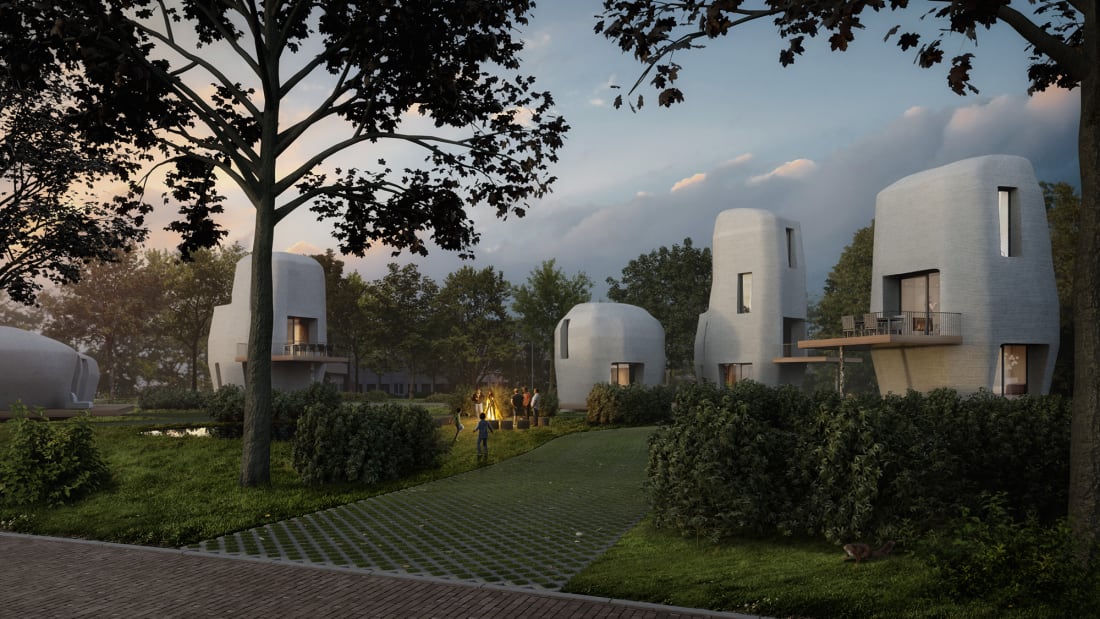
While it may take a while to complete, Project Milestone is at the forefront of commercially-viable 3D printed homes that can compete on every level with traditional housing. The failure or success of this project will say a lot about public opinion toward 3D printed homes.
What’s Next for 3D Printed Architecture?
At its core, 3D printed architecture stands to reduce waste, lower costs, and speed up the process of house and structure building. Even so, it probably won’t revolutionize the industry or solve any complex problems like the global housing crisis. Instead, 3D printed architecture is more likely to become a complement to traditional construction.
Right now, you can’t just order a 3D printed house to be built on your lot, but that day is coming closer. Once more companies adopt this technology and prove their concepts for safe, affordable housing, this technology is likely to become open to the public. Until then, we look at pioneers like Fuseproject and MX3D to develop the future of 3D printed architecture.

